It was a perfect day for a visit to a place of human sacrifice.
There were ominous clouds obscuring the mountain tops.
A lowering sky, brooding with dark, heavy clouds portended an approaching storm.
Today’s destination was the Pu’u o Mahuku heiau.
Visitors to Hawaii learn that the Hawaiian word heiau means an ancient Hawaiian temple or religious site.
Most do not realize that a heiau need not be a grand construction. They came in all sizes from tiny, family altars and personal shines to massive stone platforms. The general rule is: the bigger the heiau, the more powerful the ruler and priest – kahuna – in charge.
There were heiau for all purposes.
There were heiau built by folks who wanted more rain or wanted to catch more pigs.
There were heiau to entreat the gods for better health or more vigorous taro crops.
There were even heiau built on underwater ledges in the hope of attracting fish.
But then there were luakini heiau. These were unique. They were sacrificial temples, often dedicated to the Hawaii god of war, Kū. Luakini heiau were places of blood sacrifice of humans and animals.
Pu’u o Mahuka was a luakini heiau.
The temple, which literally translates as “Hill of Escape,” was also a place of refuge for those fleeing persecution and an astronomical observatory for ancient Hawaiians.
The rising of the Pleiades constellation as viewed from the heiau signaled the start of the annual makahiki season, a four-month time of peace and celebration.
Pu’u o Mahuka is the largest heiau on Oahu but it is not a well known visitor attraction. On this gloomy day we were the only people (and Malt) at the heiau, which is now a Hawaii State Monument.
The stone temple is 800 feet above sea level and overlooks the renowned North Shore big surf beach of Waimea Bay. Signal fires from this heiau were used to provide visual communications with another heiau at Wailua on the island of Kauai, nearly 100 miles away.

The red dirt on the North Shore is famous for staining everything it touches including small white dogs.
The site dates at least to the 1600’s and during the mid-1700s was very active during a period of tremendous internal struggles among Hawaii ali’i (rulers).
Pu’u O Mahuka had three distinct “sections” defined by rock walls ranging from three to six feet in height. Within the walls of the heiau existed wood and thatched structures, and the ground was paved with stone.
One of the gruesome aspects of a luakini heiau is that a human being, usually a freshly killed criminal, was placed at the bottom of the hole supporting each of the structural pillars.
Human sacrifices were done for many reasons.
Kauwa, the outcast or slave class, were often used as human sacrifices at the luakini heiau.
They are believed to have been war captives, or the descendants of war captives. They were not the only sacrifices; law-breakers of all castes or defeated political opponents were also acceptable as victims. Later this practice became known as “Washington-style politics” but I digress.
Times were obviously different and human sacrifice was a religious rite and cultural practice, not an act of barbarism.
As we walked around Pu’u o Mahuka, the AJF and I talked about what life was like back then and decided we liked modern days much better although she kept giving me the eye and mumbling how I might be a suitable offering to the shoe god, Nordstrom.
The actual sacrificial killings were done outside the heiau which was considered sacred. The victim was typically tied to a rock, bludgeoned and then stripped of flesh with his bones made into fish hooks.
So, how are those Cheerios tasting this morning?
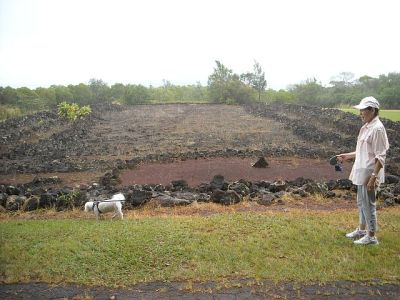
The flat area in front would have had a 20 foot wooden “oracle” tower that would have been the center piece of the heiau.
If you want to know more details about this gory topic, first talk with a mental health professional because you may be scary crazy. If she says it’s OK, check out “Luakini, The Art of Sacrifice” by Stewart Waterhouse. It’s a very tough slog of a book but offers a very detailed discussion of techniques, practices, religious rites and what not.
The Pu’u o Mahuka heiau continued to play an active role in the religious, political and social life of Hawaiians through 1819 when King Kamehameha II abolished the traditional religion. Missionaries arrived in 1820, and most of the aliʻi converted to Christianity.
Over the following decade or so all heiau were officially abandoned; most were destroyed over the years.
Pu’u o Mahuka gradually fell apart and the area was converted to ranch and farm uses and later, Russians and Alaskan Aleuts based fishing and whaling activities out of the adjacent Waimea Valley.
Tourists are often told that it is traditional, when visiting a heiau, to make a small offering (called a ho’okupu) which might consist of a lei, flower, food item or a small rock wrapped on a ti leaf.
It’s a nice story but it’s pretty much baloney, or bologna if you are a traditionalist.
Why a Presbyterian from Indiana thinks it appropriate to offer a rock to an ancient Hawaiian god of war confuses me but, hey, we need the revenue so knock yourself out, and the stone walls around Pu’u o Mahuka are littered, quite literally, with misguided ho’okupu.
Max left his own version of a ho’okupu but fortunately we were the only ones there to witness his shameful, scrunched-over gifting.
The profane little animal would have been made into an entrée had that happened in 1795.
We wandered nearby trails for the better part of an hour.
We tried to clean the infamous North Shore red dirt off the white dog knowing that this was a hopeless task and that he would need a thorough bathing at home.
On the way home the clock chimed “beer time!” so we made a stop and partook, not of the “long pork” of Captain Cook’s time but rather a couple of burgers that we shared with Max.
Full disclosure: no Malts were sacrificed in the writing of this blog post.
Categories: Max's Stories
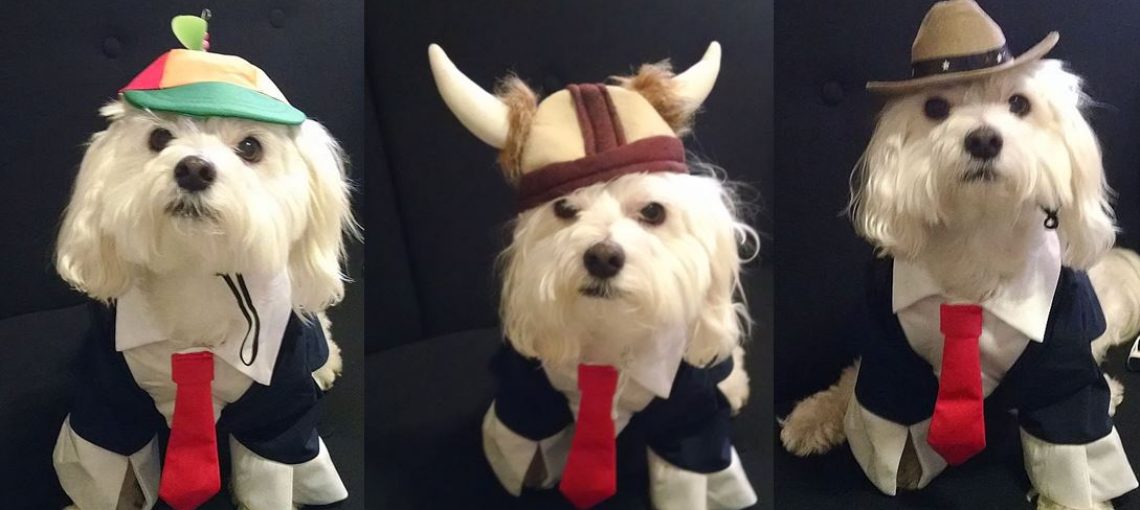

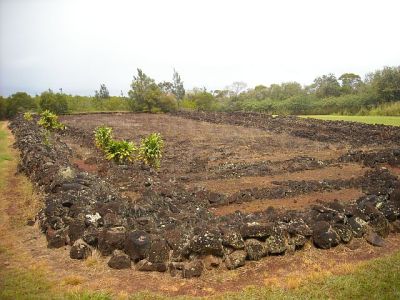

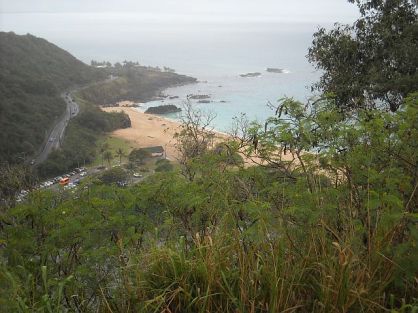
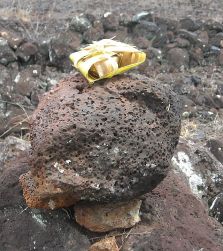

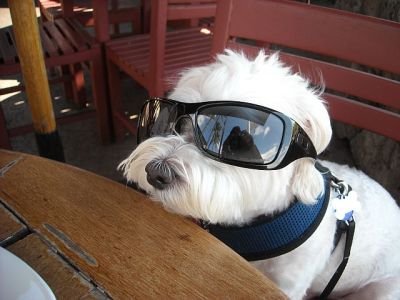
Max! You little vandal you!
LikeLiked by 1 person
I know. How profane of him. I am so glad that we were alone at the site. It’s always a little dicey to bring a dog to culturally significant places – folks can be sensitive about that stuff.
Heiau are a complex issue with Hawaiian folks. On one hand they are artifacts of a religion abolished by a Hawaiian king in 1819. On the other hand, many Hawaiian folks consider them sacred for a variety of reasons and watching a Maltese poop is low on the list of preferred visitor activities at a heiau. So we try to thread the needle when we take Max on his jaunts to places that have deeper meanings to local people. Max. on the other hand, could not care less and operates on the premise that when you got to go, you got to go.
LikeLiked by 1 person
Haha! Oh I do love dogs!
LikeLike
That opening sentence … classic! Guaranteed to keep even a halfbreed Maltese reading. If I can enjoy Stephen King, I definitely do a little Stewart Waterhouse, I think. Very interesting and well written as usual.
LikeLiked by 1 person
The Waterhouse book is a strange one but it has details about sacrificial practices, burial rites, etc., that are not readily available outside of scholarly journals and the State archives. Grim stuff. We’ve noticed Max is a bit nervous now when the topic of meal planning comes up.
LikeLiked by 1 person
Great Post. I feel like I’ve just been given the tourist “quick ‘n’ dirty” history of the area! The sacrificing of humans and animals seems to have been prevalent in so many cultures and for so many reasons ………… suddenly our world does not seem so bad (said with slight hesitation) 🙂
LikeLiked by 1 person
Many folks travel all the way here and want an authentic cultural experience but never get to visit sites like Pu’u o Mahuka. There are many off the beaten path places like this even on the rather urbanized island of Oahu and I like to share them on the silly dog blog.
The real ancient Hawaii was nothing like the palm tree, coconut bra, hula and maitai experience that is marketed by the travel authorities. It was far more brutal, fascinating, complex and interesting and the best part is you can immerse yourself in this ancient world for a while and then go drink a beer and talk it out.
LikeLiked by 1 person
What an opening sentence! And what followed was worthy of it!
I think your introduction to the practices of the people of the time was quite sufficient without searching out Mr. Waterhouse’s book…and consider Max’s response to the whole thing quite appropriate.
Super little chap, isn’t he, who boldly ‘goes’ where the P.C. fear to tread.
LikeLiked by 1 person
I’ve visited many heiau and briefly lived next to one on Kauai where my Dad had his medical clinic. My Mom was a full believer in local tales that the property was haunted but I never experienced anything supernatural.
Having said that, I have been to a couple of the sacrificial luakini heiau and have felt a tremendous sense of doom and foreboding, really creepy and thoroughly unexplainable especially by someone like me who is not into things like spirits and spooks. The overall effect was a strong desire to simply leave the scene as fast as possible. Which I did.
LikeLiked by 1 person
Maybe Max was commenting on the aesthetic construction of the heiau? I’ve seen some truly remarkable lava stone structures on the Big Island that have blown me away with their seemingly intricate fitting puzzle pieces. The heiau…um…well, what can I say-function over form? Guess when you’re prepared to do all sorts of sacrificing, aesthetics were kind of sacrificed as well? Pawsome post though (are you sure you aren’t on staff with Nat Geo?), despite Max’s ‘comment.’ 😉 Hope Max is all tidy-whitey again without too much trouble to him or his bathers.
P.S. Shoot, I don’t know Colorado’s history half as well as you know Hawaii’s and I can actually pronounce the names of stuff around the state here. Well done on your part!
LikeLiked by 1 person
Max’s nose was going crazy, sniffing everything with intensity. I don’t really want to know what he was smelling. He got so filthy that we had to find a water source and then give him an impromptu bath in a styrofoam cooler we keep in the trunk of the car. A good scrubbing after we got home and he was as good as new.
If heiau are of interest, the biggest and baddest is near Hana, Maui, a 3 acre temple with bodacious walls. There are some big boys on the Big Island too, the one near Hawi is also a luakini. If you want to look it up , it’s name is Mo’okini heiau and it is where I experienced that profound sense of doom that I mention in my reply to Helen’s post, above. Totally creeped me out and I am not easy to creep out.
LikeLiked by 1 person
Thank goodness for the last sentence. It looks like the Malt would be toast in the picture where you hold him.
LikeLiked by 1 person
He had to be held at arm’s length. That red dirt jumps on you and stains everything. His entire undercarriage was a weird orange-red color.
LikeLike
All this time, I’d been thinking Nazis were evil, when it turns out it was really Hawaiians. Unless you count that German co-pilot that just decided to kill 150 on a plane bc of his mental “illness.” Not doing much to help the German perception. But on a non-racist note, it was very “when in Rome” of Max to make such a deposit, er ho’okupoo-poo. I think I learned all I needed to know about human sacrifice in “Joe Vs. The Volcano” bu this was a good reminder. All along, I’ve thought of a fishhook as a reminder to be “fishers of men,” never thinking it could be made of victim bones. Dem bones, dem bones, dem dry bones…
LikeLiked by 1 person
If you were of the ali’i (ruling class). things were pretty sweet but if you were maka’ainana class (commoner) things got dicey. Just stepping on a royal shadow could get you filleted. The ancient kapu (taboo) system was merciless. Then there were the kauwa or outcasts, the bottom rung of society, and their life wasn’t worth a plugged coconut.
So, basically just like today. Except we generally don’t sacrifice people so openly anymore.
LikeLiked by 1 person
So many apostrophes. Why can’t they just put the letter in that they’re leaving out? It’s so very D’Nelle.
LikeLike
Yes…Definitely…we as Americans should all bring our dogs/cats/rabbits/goats/pets to SACRED SITES so they can crap on SACRED PLACES….I am sure the Vatican, the Kaaba (Muslim House of God) , the Varanasi (Hindu Holy Place), Lumbini Grove (for Buddhists), Mauna Kea (Kanaka Maoli), Six Grandfathers (Lakota/Sioux), and many other places will WELCOME YOU AND YOUR PETS….Your lucky your not back in the day….we would roast you and your pets….for dinner.
LikeLike
Max might be tasty but I’m pretty sure you wouldn’t want to roast and eat me – way too old and stringy unless you adobo me.:) More to your point, I would never let Max actually intrude on the heiau site. The area surrounding the heiau (to my knowledge) is and never was deemed sacred, that is why blood letting was permissible back in the old days. I’m not sure what the radius is before a dog visit becomes acceptable. To use your analogy, a dog walking in St. Peter’s Square is nothing surprising and they do scrunch ‘n go on occasion, actually frequently, but never would they enter the basilica. Anyway, no offense is intended and thanks for visiting and sharing your mana’o – all views are welcomed and respected at the silly dog blog.
LikeLiked by 1 person
I’ve never once thought it was the perfect day to visit a place of human sacrifice. Max, you’re so much more perceptive than I am!
LikeLike
As usual, I enjoyed following you guys on your travels. I am currently doing the April A-Z Challenge and tomorrow, I’m writing about Australia’s capital, Canberra, where human sacrifices are still made daily at our national shrine, otherwise known as Parliamnet House. Notable sacriifices there include PM Gough Whitlam who was notoriously sacked by the Queen’s appointed Governor-General back in the 70s and more recently when the Labor Party sacked their own elected representative Kevin Rudd and replaced him with Julia Gillard and then replaced him again I think.Money in brown paper bags has also been left in politicians offices over the years, which also seems like some kind of sacrifice. At least, such cannibalistic practices have died out in Hawaii.
LikeLike
Living in Virginia, I sympathize with the white dog-red soil quandary. The younger version of the currently prostrate on the sofa little white dog named Max often appeared home the color of an Irish setter, the little beast. I’m with Helen, I’m skipping the book. Reading “Wolf Hall” was enough for me. I hold no romantic views of the good old days. On a side note, isn’t it sad how many historic monuments and sites are empty?
LikeLike